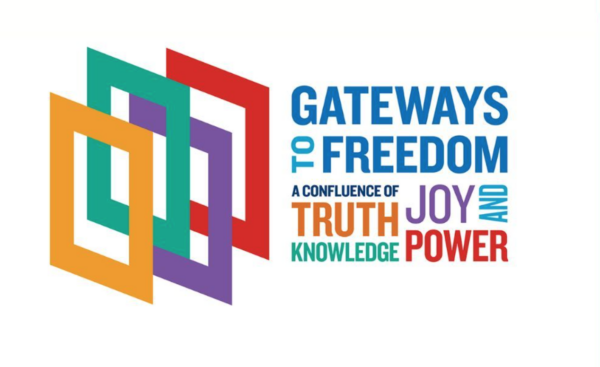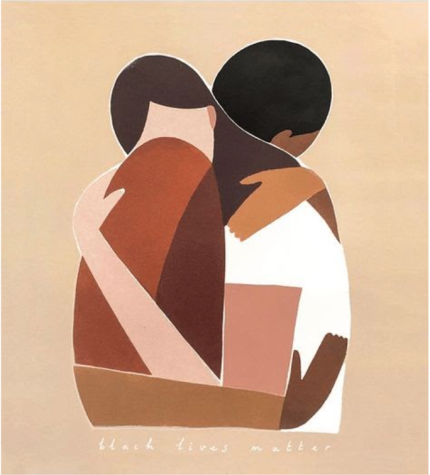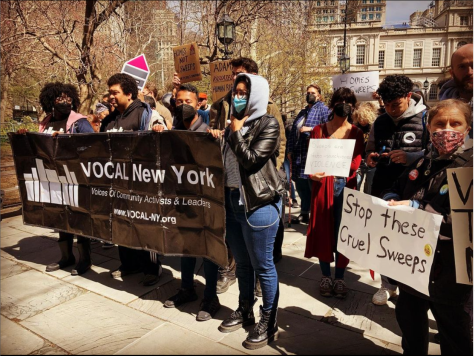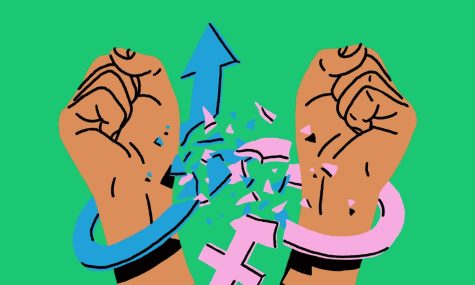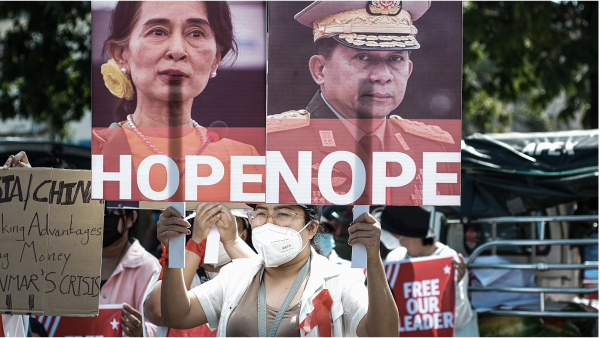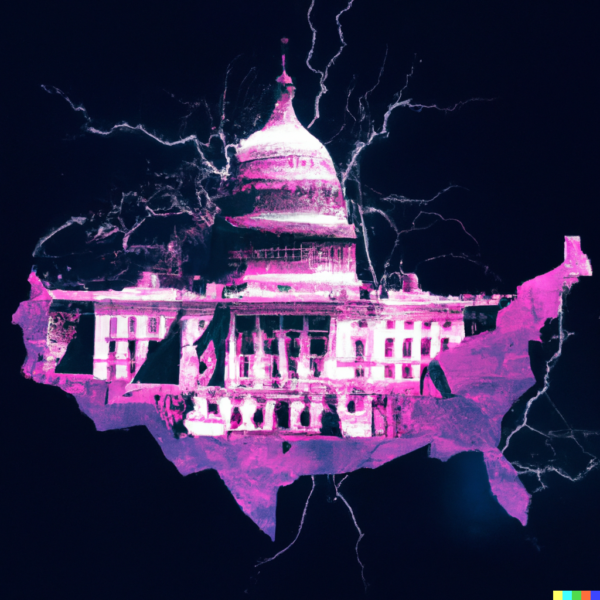He Said, She Said, They Said: Why Proper Pronoun Protocol Matters
Pronouns are a basic part of any language and have existed for as long as verbal communication has. So why is it that in 2020, after millenia of use, they are still a topic of conversation, with Merriam Webster awarding the pronoun “they” the title of 2019 Word of the Year?
Pronouns are defined by Merriam-Webster’s Dictionary as words “used instead of a noun or noun phrase.” Importantly, they also designate gender, and this is where their contemporary relevance lies. Through the use of pronouns, people show the way they see their own gender identity and that of others; using the correct pronouns is a basic sign of understanding, or at the very least, respect.
For someone questioning their gender identity, the right pronouns can mean a lot. Though this may seem like an overstatement to some, it is only because most people are lucky enough to take security in their gender identity for granted—only 0.4% to 1.8% of American adults identify with a gender other than the one they were assigned at birth. Thus, most people will never understand what this feels like. As Dylan Moore, a transgender T4 student and EIB member said, “People say it doesn’t help that much, but it’s never trans people who say that.”
For much of history, members of the LGBTQ+ community have been marginalized through religion, societal norms, and legislation which criminalizes non-heterosexual interactions and gender non-conforming lives, the likes of which still exist today. In seven out of 70 such countries, the death penalty is a possible punishment. While the birth of the Gay Rights movement after the 1969 Stonewall Uprising has caused a steady increase in acceptance and inclusion for gay people in our society, trans people have not always benefitted in the same way, though trans activists like Marsha P. Johnson and Silvia Rivera created the movement. Still today, trans people are often spoken about and treated as if they are wrong for wanting to be secure in their gender identity. For example, legislation like Ohio’s Protect Vulnerable Children Act “protects” children from receiving even non-permanent treatments—such as the use of hormone blockers, which allow people to stall their physical maturity—that helps them manage their body while they make a decision. The result is that many kids go through what they feel is the “wrong puberty,” Dylan says, which can be a severely traumatizing experience and can jeopardize their attempts to transition later on.
The mentality of transness being something that “vulnerable” children have to be protected from is severely damaging, but is common—even in relatively progressive countries like the United States. Much of this comes from the idea that being trans is somehow unnatural, because it may involve major physical changes or flouting the roles and behaviors that society has prescribed everyone at birth. However, it is precisely the opposite: natural is not necessarily the gender you were assigned at birth, but the one you identify with.
Nonetheless, transness continues to be seen as a superfluity of something abnormal. Elon Musk, for example, tweeted that non-binary pronouns were an “[a]esthetic nightmare,” and Donald Trump Jr. called transitioning “nonsense”— remarks that caused great discomfort for many people. However, trans people are, quite obviously, normal people, and have identities outside of their transness—there is nothing unnatural about wanting to feel secure in one’s body, and the lack of acknowledgment of this is severely damaging and pervasive even in American society. As Dylan put it, “Trans people have the unique experience of having to explain ourselves to the world.” And they often find society telling them that they’re wrong.
Thus, even in the wake of years of improvement for the LGBTQ community, trans people continue to be one of the most marginalized groups in society. In particular, they are marginalized in legislation, which not only prevents them from transitioning, but treats them differently from others, such as in a new federal law which effectively allows discrimination against trans people in healthcare, by homeless shelters, and in countless other situations. So, purely because of their desire to be comfortable in their own skin, trans people find themselves marginalized and unprotected.
Another heartbreaking obstacle is that as the support for the trans movement grows, so does the hate and opposition for it. At least 41 trans people, most of which were Latinx or people of color, were killed in 2020 alone, mostly in the wake of the Black Lives Matter demonstrations and other civil rights protests, many of which advocated for trans rights. In 2019, the official number was “only” 25 — a number that is not able to fully encompass the issue as many of these murders go “unreported or misreported” — according to the Human Rights Campaign. So even as the trans movement gains prominence, it still faces obstacles which almost offset the improvements.
As a result, one in two trans people have experienced mental-health issues and 41% have attempted suicide. Some use these statistics to show that trans people are mentally unstable, but in truth, they reflect a response to discrimination and isolation. In addition, the experience of gender dysphoria—when people feel uncomfortable as their gender identity is different from their assigned gender—can be a difficult one, regardless of societal norms or pressures, especially if one doesn’t have access to proper healthcare in order to start one’s transition. When stigma and innumerous social and legislative injustices to trans people accumulate, it can be extremely hard to deal with and lead to a fragile state in even the strongest people.
It is, of course, important to note that some trans people do not have the experience of feeling they are in the wrong body. Everyone’s experience is different, and there is no right way to be trans, which is something people tend to get wrong, according to Dylan. Ideally, every trans person would become comfortable and loving of their identities, something that he says he only managed to come to terms with recently. Regardless, pronouns reveal how people see you at first glance if no other indication has been given, and for someone struggling with their gender identity and with their body, being addressed with the wrong pronouns can lead to insecurity and self-questioning.
Addressing someone with the right pronouns is, therefore, an acknowledgment of this struggle, and a basic sign of respect. Many still don’t understand the significance of pronouns, or what it means to be trans, but that’s where another important point lies: you don’t have to understand people to respect them. And if someone tells you that they’d like you to address them with specific pronouns because it matters to them, you don’t have to have an in-depth understanding of their struggle to afford them that respect, especially when the right pronouns can mean so much more to them than they do to you. It’s fine to slip up—the important part is to make an effort to remember. If you still don’t understand why they’re important, talk to someone about it, as many trans people will be happy to explain it. Others will not, in the same way that not every cisgender person likes to talk about their own sexuality or identity, and that’s fine. They’ll let you know, and you can move on. But the excuse of not understanding their importance, or of being difficult to get used to it are flimsy ones—it’s the least you can do.
As far as actual pronouns go, they’re not very complicated. People who identify as a woman generally use she/her, people who identify as men generally use he/him, people who don’t identify with either or are still understanding themselves use they/them, and ze/hir is used for people who are gender neutral. There are others, which some people feel most comfortable with, but those are the most commonly cited. Though some of these are uncommon or may seem like new inventions, they’ve been around longer than you’d think, as has the idea of gender neutrality or questioning one’s gender. The word “ze,” for example, was first coined by a writer known only as J. W. L. in 1864. As the trans movement gains prominence, so do these words. The fact that many have not heard of them until now is not a testament to the fact that transness is a new development, but to the fact that it has been ignored for a long time.
Refusing to use pronouns because they’re unusual is also a feeble excuse; they’re unusual because we’re not used to them, and we’re not used to them because we are not used to acknowledging transness. Trans people aren’t going anywhere, and so it’s important that everyone understands these pronouns and their importance. It is not very difficult to integrate them into our everyday conversations, and it requires minimum effort to stop treating them as an outlandish part of language, because they shouldn’t be.
Pronouns may seem like an insignificant part of our language, but to trans people, they can mean the world. Understanding why they are important and incorporating them into our language can reduce the stigma associated with transness and help us accept it, because feeling comfortable in your own body is something to celebrate, and because it’s not going away.





